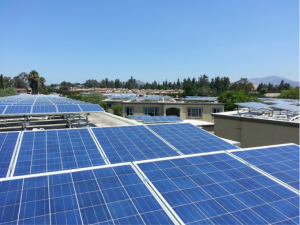 A common knock on California’s climate programs is that they often end up disproportionately benefiting the wealthy. From cash rebates for Tesla drivers to lower electricity rates for single-family homeowners with solar panels, there was some truth to the complaint.
A common knock on California’s climate programs is that they often end up disproportionately benefiting the wealthy. From cash rebates for Tesla drivers to lower electricity rates for single-family homeowners with solar panels, there was some truth to the complaint.
But in the last few years, the legislature and other state leaders have made efforts to expand the benefits of these programs to low-income Californians. Rebates for electric vehicles, for example, are now means-tested and not available to high-income residents, and at least 25 percent of cap-and-trade auction proceeds must go to disadvantaged communities.
Now residential solar incentives are part of the mix, too. The California Public Utilities Commission just approved spending $1 billion in cap-and-trade dollars over the next 10 years on incentives for landlords to install rooftop solar panels on apartment buildings housing low-income residents. The San Jose Mercury News has more details.
Overall, the program seems like a smart investment, given that multifamily dwellers (especially of the low-income variety) are otherwise cut out of these opportunities if they don’t own their roofs. Politically it also gives more Californians a stake in the state’s climate programs, which helps build public support to keep the programs stable.
But it would be nice to see this program bundled with energy efficiency incentives. Just like solar is a tough nut to crack, given the split incentives among landlords who own the building and the tenants that pay the bills, so is energy efficiency work, which should be the first priority to save energy. Bundling efficiency incentives with solar could make landlords more open to doing this retrofit work, as well as making it more economically effective.
I’d also note that overall, California’s climate programs are benefiting the economy and creating jobs in some of our most disadvantaged regions, including the San Joaquin Valley and Inland Empire, as we studied in reports this year. And as wealthier residents purchased clean technologies like electric vehicles and solar panels when they were expensive in the early years of production, they’ve helped bring the costs down to the point where these technologies are now affordable to many millions of Californians.
But overall this solar incentive program is a good step in the right direction, and a harbinger of more climate programs to come that will benefit the state’s low-income residents.


